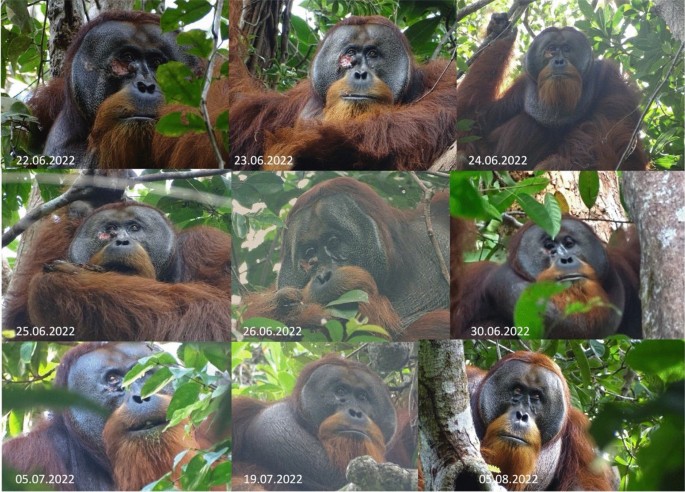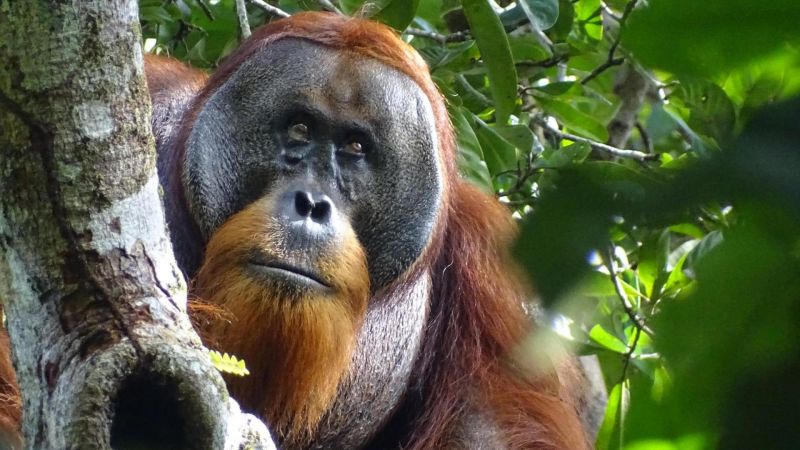A male Sumatran orangutan named Rakus treated a wound on his face by chewing the leaves of a climbing plant called Akar Kuning and repeatedly applying the juice to the wound.
Rakus then covered the wound with the chewed leaves, which are used in traditional medicine to treat diseases such as dysentery, diabetes and malaria, report the authors of an article published this Thursday in Scientific Reports.
The behavior was observed in June 2022 in Indonesia's Gunung Leuser National Park by a team of researchers from the Max Planck Institute for Animal Behavior.

"We are very excited about these observations," the study's lead author, Isabelle Laumer, a postdoctoral researcher at Max Planck, told CNN.
Although other wild primate species are known to swallow, chew or rub themselves with plants with medicinal properties, scientists have never seen them used to treat fresh wounds.
The team believes that Rakus intentionally used the plant to treat his wound, as he applied it repeatedly in a process that the researchers say took several minutes.
"This possibly novel behavior presents the first report of active wound treatment with a biologically active plant in a great ape species," says Laumer.

The researchers believe that Rakus probably suffered the wound in a fight with another male orangutan - conflicts that are rare in the area thanks to the "high availability of food, high social tolerance among orangutans and relatively stable social hierarchies", explained Laumer.
This means that orangutans rarely suffer wounds, giving researchers little opportunity to observe this behavior.
As for how Rakus might have learned to treat a wound, one possibility is "accidental individual innovation", said Laumer.
The orangutan may have accidentally touched his wound while feeding on the plant and felt immediate pain relief due to its analgesic effects, causing him to repeat the behavior, he explained.
Another possible explanation is that Rakus learned how to treat a wound from other orangutans in the area where he was born, Laumer said.
The observation "provides new insights into the existence of self-medication in our closest relatives and the evolutionary origins of wound medication in general," added the study's lead author.
The researcher hypothesizes that wound care may have its origins in a common ancestor shared by humans and orangutans.
The researchers plan to closely observe any other injured orangutans in the area to see if the behavior is repeated, said Laumer, who added that the findings underline the commonalities between humans and orangutans.
"We are more alike than we are different," the researcher concluded. "We hope that this study will raise awareness about their critically endangered status in the wild."






